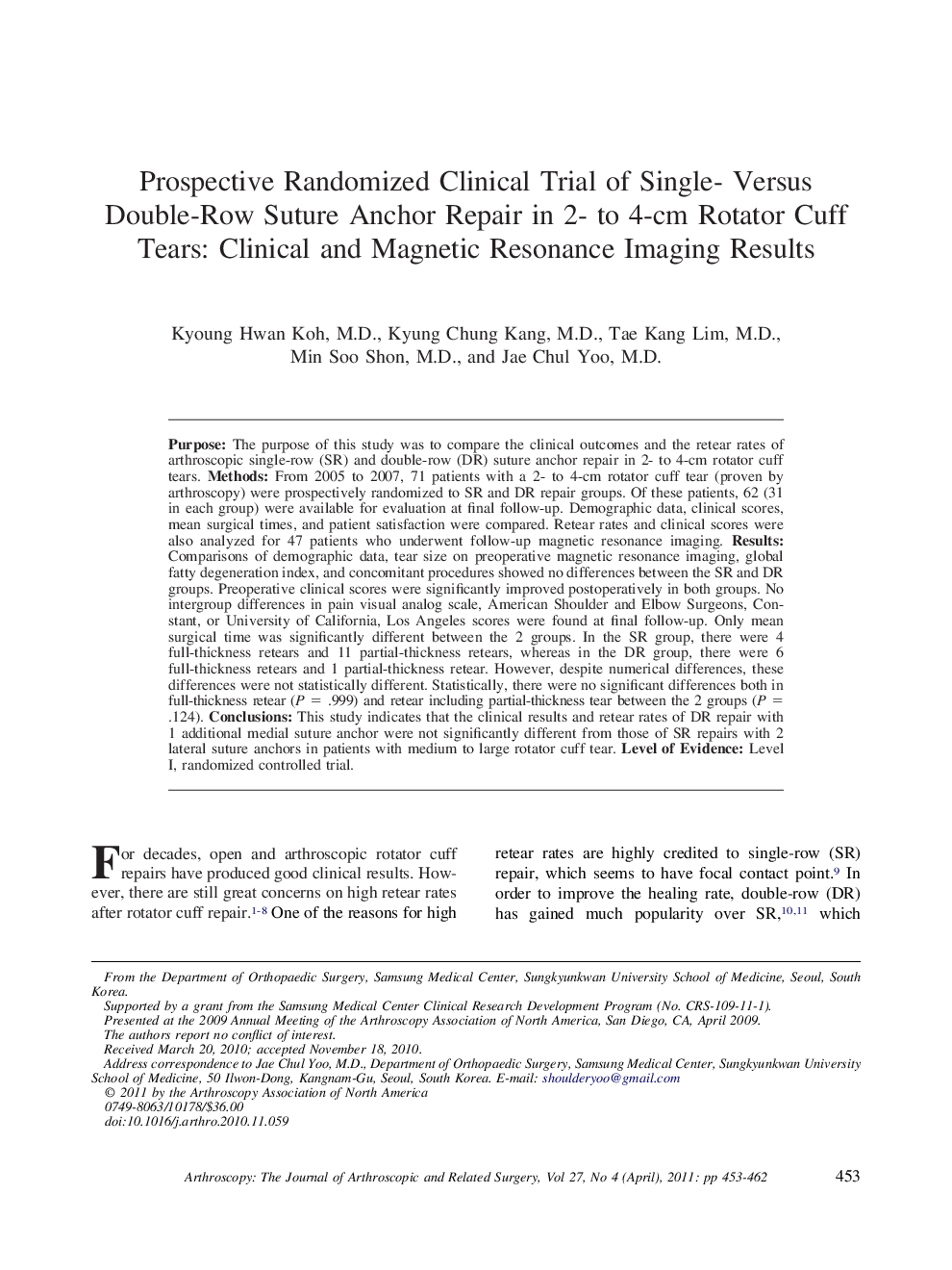| Article ID | Journal | Published Year | Pages | File Type |
|---|---|---|---|---|
| 4043783 | Arthroscopy: The Journal of Arthroscopic & Related Surgery | 2011 | 10 Pages |
PurposeThe purpose of this study was to compare the clinical outcomes and the retear rates of arthroscopic single-row (SR) and double-row (DR) suture anchor repair in 2- to 4-cm rotator cuff tears.MethodsFrom 2005 to 2007, 71 patients with a 2- to 4-cm rotator cuff tear (proven by arthroscopy) were prospectively randomized to SR and DR repair groups. Of these patients, 62 (31 in each group) were available for evaluation at final follow-up. Demographic data, clinical scores, mean surgical times, and patient satisfaction were compared. Retear rates and clinical scores were also analyzed for 47 patients who underwent follow-up magnetic resonance imaging.ResultsComparisons of demographic data, tear size on preoperative magnetic resonance imaging, global fatty degeneration index, and concomitant procedures showed no differences between the SR and DR groups. Preoperative clinical scores were significantly improved postoperatively in both groups. No intergroup differences in pain visual analog scale, American Shoulder and Elbow Surgeons, Constant, or University of California, Los Angeles scores were found at final follow-up. Only mean surgical time was significantly different between the 2 groups. In the SR group, there were 4 full-thickness retears and 11 partial-thickness retears, whereas in the DR group, there were 6 full-thickness retears and 1 partial-thickness retear. However, despite numerical differences, these differences were not statistically different. Statistically, there were no significant differences both in full-thickness retear (P = .999) and retear including partial-thickness tear between the 2 groups (P = .124).ConclusionsThis study indicates that the clinical results and retear rates of DR repair with 1 additional medial suture anchor were not significantly different from those of SR repairs with 2 lateral suture anchors in patients with medium to large rotator cuff tear.Level of EvidenceLevel I, randomized controlled trial.
